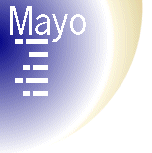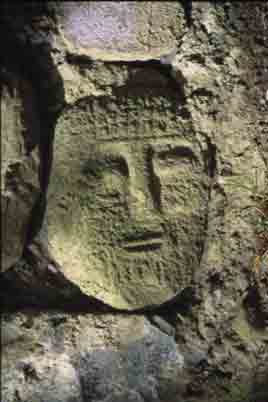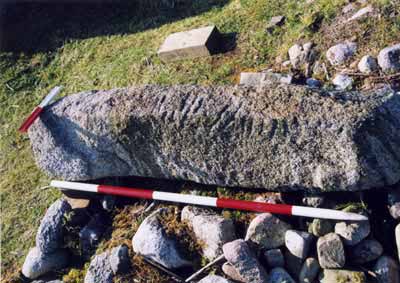|
Recent Stone Finds |
Recent Stone
Finds Carved Stone-Head found in Balla.
Kilgarvan Ogham Stone.
During a recent informal outing by some members of the Mayo Historical & Archaeological Society a most interesting and important discovery was made in Kilgarvan churchyard in the parish of Bonniconlon, Co. Mayo. A previously unrecorded ogham stone was found lying in the graveyard, close to where an ancient church once stood. Local tradition tells us that the church was founded by St. Feichin of Fore, a 7th century saint, who was born in Leyney in Co. Sligo.
Ogham was a cumbersome method of writing used by the ancients to inscribe the Irish and Pictish languages on stone monuments. It was popular between the 4th and the 7th centuries but there are some scholars who think the stones date back at least to 100 AD. Ogham script consists of lines and notches incised on the edge of a stone, with each line or notch, or series of lines and notches, representing different letters of the alphabet. It is usually read from the bottom upwards. The origins of ogham is in dispute with some scholars seeing it as having a connection with the runic alphabet, (a writing system used by the peoples of northern Europe, Britain, Scandinavia, and Iceland, from about the 3rd century AD.) while others maintain it is simply a transformation of the Latin alphabet.
|
|



